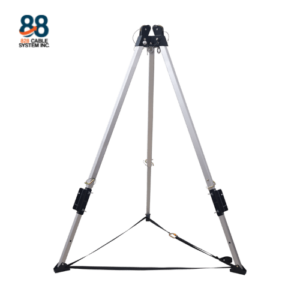
A Comprehensive Guide to Confined Space Entry Procedures
Confined space entry is a critical aspect of workplace safety, particularly in industries where workers must access areas with limited entry and exit options. Understanding and adhering to proper procedures is essential to ensure safety and compliance. This guide provides a comprehensive overview of confined space entry procedures, emphasizing the importance of regulations, risk assessment, safety gear, and emergency response.
Understanding Confined Spaces
Confined spaces are areas that are not designed for continuous occupancy, typically characterized by restricted access and limited ventilation. Common examples include cargo holds on ships, industrial tanks, and pressure vessels. These spaces pose unique challenges due to their isolation and the potential presence of hazardous conditions.
Regulations and Standards for Confined Space Entry
Adherence to regulations is crucial for ensuring the safety of workers entering confined spaces. Key regulations, such as those set by OSHA, outline the necessary procedures and requirements for confined space entry. Compliance with these standards is not only a legal obligation but also a fundamental aspect of maintaining a safe work environment.
Risk Assessment and Planning
Before entry, a thorough risk assessment must be conducted to identify potential hazards. Factors such as ventilation, the presence of toxic substances, and potential for physical hazards should be evaluated. Developing a detailed entry plan, including emergency procedures, is essential for managing risks effectively.
Essential Safety Gear and Equipment
Personal protective equipment (PPE) is vital for protecting workers in confined spaces. This includes items such as helmets, gloves, and safety harnesses. Additional safety equipment, such as gas detectors and communication devices, also plays a crucial role in ensuring a safe working environment.
Preparing for Confined Space Entry
Preparation is key to a safe confined space entry. This involves conducting pre-entry checks, ensuring proper ventilation, and verifying that all safety equipment is in place. The entry supervisor plays a critical role in coordinating these preparations and ensuring that all team members are briefed and ready.
Confined Space Entry Procedures
Following established procedures during entry is essential for safety. This includes a step-by-step approach to entering the confined space, continuously monitoring conditions, and maintaining communication with the team. Adhering to these procedures helps mitigate risks and ensures a structured response to any issues that may arise.
Emergency Response and Rescue
In the event of an emergency, having a clear response plan is crucial. This includes knowing how to handle incidents, conducting effective rescue operations, and ensuring that all team members are trained in emergency procedures. Proper training and equipment for rescue operations are vital for managing confined space emergencies.
Post-Entry Procedures and Documentation
After exiting a confined space, it is important to follow post-entry procedures. This includes conducting a debriefing, reviewing any issues encountered, and documenting the entry and any incidents. Proper documentation is essential for maintaining records and improving future safety practices.
Best Practices and Tips
Implementing best practices can significantly enhance safety during confined space entry. This includes regular training, reviewing case studies from the industry, and continuously improving safety protocols. Lessons learned from real-world incidents can provide valuable insights for better managing confined space entries.
Takeaway
Adhering to proper confined space entry procedures is crucial for ensuring safety and compliance. By understanding regulations, conducting thorough risk assessments, and utilizing appropriate safety gear, you can help protect workers and maintain a safe work environment. Regular reviews and updates to procedures based on best practices and lessons learned will further enhance safety.
